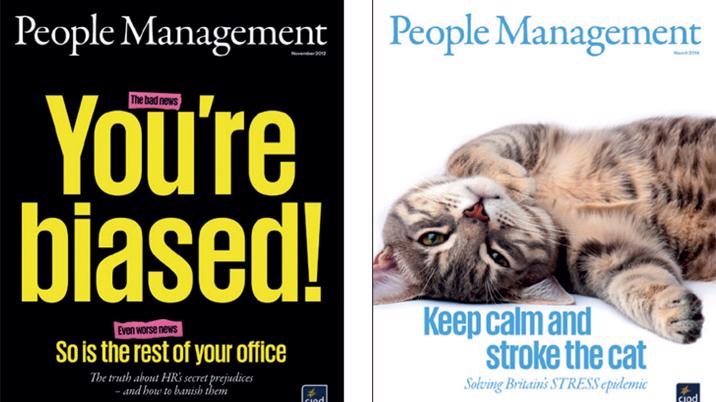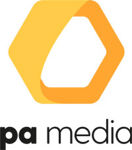
Every editor will boast their own particular strand of nostalgia for the pre-internet days, when magazine publishing felt like an ever-expanding industry of limitless possibility and the publishing cycle a heady, and sometimes hedonistic, charge towards a deadline that never quite seemed to arrive. I recall couriers ferrying proofs to the pub for an increasingly insensible editorial team to pick over, and an editor who pronounced that his job was solely to work on the front cover, with the comparatively unimportant inside pages left to the rest of us, a task which necessitated him spending a matter of hours each week in the actual office.
In truth, B2B publishing has never been about such excesses. It has always been a hard slog characterised by dense subject matter, determined networking and a reliance on proper, news-driven journalistic values. It has suffered perhaps less noticeably but more deeply in recent years compared to the devastated consumer sector and, according to the latest figures from PwC - which paint a grim picture for the UK magazine market as a whole - there will be little respite, with digital subscriptions and commercial income notably failing to replace their print equivalents among trade titles in particular.
When we asked our readers which medium was most important to them, nine out of ten said print.
Dickon Ross
No ordinary recession
As with other sectors, the dovetailing of an economic downturn with the increasing availability of sophisticated new digital tools has been devastating for print. “Recessions come and go but the rise of digital is a game-changer for all publishers, a seismic structural shift, and a direct threat to tried and tested business models of the past,” says Adam Leyland, editor of The Grocer, one of a number of B2B titles that began reinventing itself for a new era before the deepest cuts struck and can now boast of being a genuinely joined-up, multi-channel operation.
Recruitment advertising was, of course, a notable casualty, and titles – primarily those servicing professions or vertical sectors - which relied on it to make print viable have largely disappeared or had to start again almost from scratch. Dickon Ross, editor of Engineering & Technology (E&T) characterises those that remain as either ‘lean forward’ brands that primarily provide information, be it financial, technical or career-related, or ‘lean back’, offering a serendipitous mix of context and content. Unsurprisingly, information has largely migrated online; context providers, meanwhile, must decide how to balance print and digital channels. When Dan Zhang of the Communication and Media Research Institute at the University of Westminster surveyed 150 leading B2B editors and publishers in late 2014, only one had no web presence and 73 per cent said they published online either in real time or several times a day.
Most of the most voracious digital B2B brands are, of course, owned by the same publishing companies – the Reeds, Haymarkets and United Business Medias – that were pre-eminent in print before the recession. But their audiences have fragmented among the online proliferation of titles, and not just from niche rivals: professional services firms (particularly PwC and Accenture), universities and law firms have all taken advantage of the lower cost of entry among websites and apps to provide editorialised B2B solutions of impressive quality. Publishers have had to spread their constrained editorial resources more thinly across the channels, with many allowing print to wither while they chase digital revenues.
There aren’t many editors who think this is a good thing, and it seems readers don’t either: “When we asked our readers which medium was most important to them, nine out of ten said print,” says Ross. “And this is an audience of engineers who are used to reading highly complex information online.”
At People Management, I like to think we have found another way. As a customer magazine, our economics are slightly different to others, but we still need to turn a profit, and we are fortunate to boast a client (the CIPD, the leading membership body for HR) which has backed us in our strategy of putting print at the heart of a multi-channel conversation. Since we began publishing this 35-year-old title at Haymarket Network in 2012, we have made print more forthright and immediate (“You’re biased!” screamed our relaunch cover, which is just about the worst thing you can say to an HR manager) and have invested time and effort in finding out who our readers are. And, interestingly, more than 80 per cent of the 135,000 who receive the magazine each month are women, which led us to reassess our design values and guarantee our readers could see themselves reflected in the magazine’s values, literally where possible – we ensure photography of HR directors is frequent and flattering.
Editors who don't have the time to get out and about are on the back foot.
Dominic Mills
Virtuous circle
Topical conversations which begin online, initiated by ourselves or our readers on LinkedIn or Twitter, feed into the magazine and vice versa, creating a virtuous circle. When we saw readers discussing the difficulties of recruiting disabled candidates on a LinkedIn feed, it became an in-depth news article to which those LinkedIn contributors were integral. And when we put a cat on the cover as a flippant way of relieving Britain’s stress epidemic, it sparked a Twitter frenzy of cat pictures which was more than just a diversion from the story – people were talking about the topic behind the cover as well as posting pictures of their own feline friends.
None of this is easy. We work longer hours than ever before as an editorial team, marrying the daily cycle of the web with the monthly print requirements, and still don’t have enough time for the detailed curation skills demanded by LinkedIn in particular. And, as editor, I have never spent so long on magazine craft: while colleagues editing other titles tell me their involvement in the creative process accounts for as little as ten per cent of their time, I spend more like a third of my days in detailed discussion over picture choices, headlines and layout concepts that put the right story at the heart of a polished presentation. It is easy to revert to stock shots and clichés but we have determined to aim higher.
It pains me to see some venerable B2B brands whose print output is obviously under-resourced and unimaginative. But there are notable exceptions, both among flagship names such as our fellow Haymarket title Management Today and the consistently surprising Farmers Weekly and Retail Week and among customer titles, CBI’s Business Voice, Lloyds of London’s Market, ILM’s Edge and ICAEW’s Economia.
I think as editors, we are more and more like engineers, needing to understand digital, to be able to get under the bonnet.
Adam Leyland
Need to get out more
If my own experience is anything to go by, the way these titles’ editors spend their time is radically different to a decade ago. Few have the resources to cover all their channels adequately and are doing more with less, as well as being more hands-on. The most notable casualty of this approach is the ability to spend time ‘on the circuit’ cultivating contacts and representing your brand among readers and influencers. “An editor who has time to interact with the most senior figures in their industry is one who is completely on top of, and immersed in, the major trends,” says Dominic Mills, former editorial director of Haymarket Business Media and now an editorial consultant. “It's about connections and relationships. Editors who don't - and this is the most common complaint I hear from them - have the time to get out and about are on the back foot. Eventually, this plays out in a loss of credibility and authority in their title.”
And then there are the other facets of editorship – managing people, maintaining brand values, acting as a commercial liaison and potentially fulfilling an integral magazine production role too. It is no longer possible to do it all. Some have responded by devolving responsibility for digital to others in the team. Some see themselves as traffic managers for content, pointing it to the right channel and overseeing its quality but rarely getting hands-on.
It is easy to revert to stock shots and clichés but we have determined to aim higher.
Tomorrow’s B2B editor
Neither approach is ideal. But there have been some benefits from this brave new world. It has broken down editorial insularity, forcing editors to liaise with commercial and digital colleagues on new formats. It has arguably increased diversity, and banished the old command and control style of leadership from the editorial floor. It has served readers better by allowing real time publishing of news stories. It has also devolved decision-making power more widely across the team, to news editors, digital editors and feature editors among others. “The editor has to delegate editing across the team; otherwise nothing would get done in a timely manner, and they would go mad,” says Mills. “I don't necessarily think this is a bad thing - but it's difficult to get the balance right between empowering the next layer of journalists and maintaining quality control.”
Mills says the B2B editors of tomorrow will need to be business managers, digital strategists and data analysts as well as editorial leads. They may also have to be proficient in new technologies: Ross built the new E&T app himself, and Leyland says: “I think as editors, we are more and more like engineers, needing to understand digital, to be able to get under the bonnet, in a way that we never had to (and still don't need to) with print.”
What they won’t be is pure number-crunchers, says Leyland: “Many B2B publications are reinventing themselves as data providers, or market research companies. I understand the need to explore new revenue streams, but that's not what journalists do.” Most publishers are returning to the simple truth that content – which means words and pictures – is the most impactful and deep-seated way of connecting with a community (what Ross calls “treating readers as human beings”), and it takes a properly trained and journalistically capable editorial leader to deliver that. And if all else fails, stick a picture of a cat on your cover. It seems to work.












